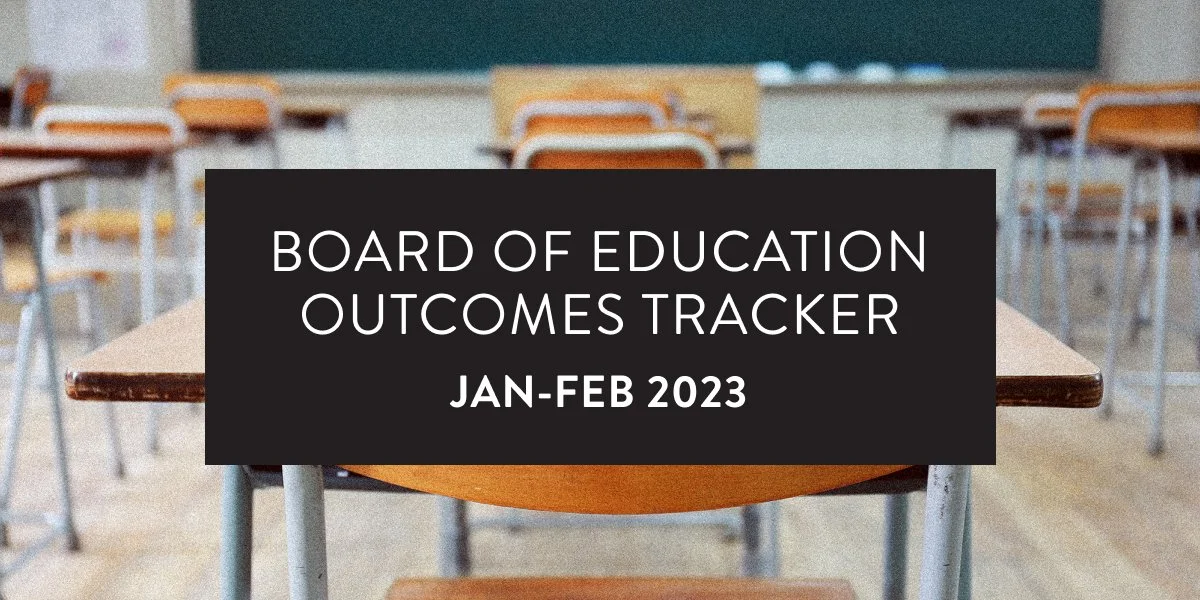The Board of Education is Failing to Keep a Key Promise for Students—Here’s Why
Last year was tumultuous for the Board of Education. Voters recalled three board members, the Mayoral appointees to those seats ran for re-election as a slate that was two-thirds successful, and Superintendent Matt Wayne took the helm. Families and education advocates alike have made it clear in the elections that they wanted a board that prioritizes improving students’ attendance, educational outcomes, test scores, and college readiness.
To that end, in September 2022, the Board of Education made a bold policy promise under President Jenny Lam’s leadership to dedicate at least half of each meeting’s time to improving student outcomes. In the past, less than one percent of meeting time per month was spent on student outcomes, according to the Chronicle’s Jill Tucker—most of the board’s time was spent on “adult issues” like balanced budgets, teacher satisfaction, facility conditions, and discipline disparities.
In December 2022, the Chronicle checked in on how the board was doing to fulfill this 50 percent promise, and the diagnosis was less than stellar. District officials at the time said that they would start in earnest in January 2023.
Our partners at Families for San Francisco have been diligently watching each meeting and taking notes. To quantify the amount of time spent on student outcomes, they’re looking at the Board Agendas, which are generally broken up into four categories: Board Business (administrative items), Public Comment, Student Outcomes (curriculum, student achievement reports/updates, etc.), and “Other” (beginning/ending of meeting comments etc.). They’ve been keeping time—literally counting the minutes—as each agenda item progresses.
Now that January (and February) have passed, we can say that not much has changed since the board made its promise. The board is still falling well short of its 50 percent goal, only having dedicated an aggregate of 30 percent of its meeting time thus far to student outcomes.
The most concerning piece of information we’ve learned here is that the board has spent the same amount of time allowing public comment (essentially an adult public forum) as they have talking about student outcomes—30 percent of all meeting time so far, which is a leadership and time management issue.
When the board’s leadership has failed to rein in public comment, or otherwise impose reasonable limits on it, topics that have little to do with student success have taken up as much as 37 percent of one meeting. Public comment is an important part of the governing process, but it has to be concise, otherwise this ends up happening.
Make no mistake—it is entirely within the board’s power to steer the meetings’ focus. Additionally, meetings are not being led efficiently from a procedural standpoint, with board members having to step in and correct missteps in the order of the meeting. The agenda has also been derailed several times by out-of-place comments and failures to correct those deviations in a timely manner.
In order for the Board of Education to better serve our students and carry out their core mission, the board must be more diligent at controlling their time and the public’s time. They must also show that they have learned from the (very recent) mistakes of the previous board by fulfilling the commitment to spend 50 percent of their time on student outcomes—because our students can’t wait any longer.


